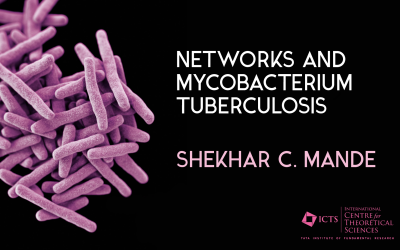Tuberculosis has been and remains to be one of deadliest diseases of the mankind. Caused by the bacterium, Mycobacterium tuberculosis, currently faces the challenge of prevention, early detection and effective control. Our laboratory has been working in understanding the biology of this organism using various Biophysical and Biochemical methods. One of our interests has been to study genome-wide protein: protein interactions and then through applications of graph theory, address various questions. We have been able to propose the mechanisms of its mode of entry into dormancy through a combination of such a study of interactions and Boolean modeling. We have also proposed methods to study differential gene expressions, especially to delineate role of various control factors. More recently, by measuring the concentrations of metabolites, we have attempted to understand its adaptation to various environmental conditions. Through these studies, exciting and valuable insights have been obtained. In my lecture, I will try to present the methodologies behind these results.



